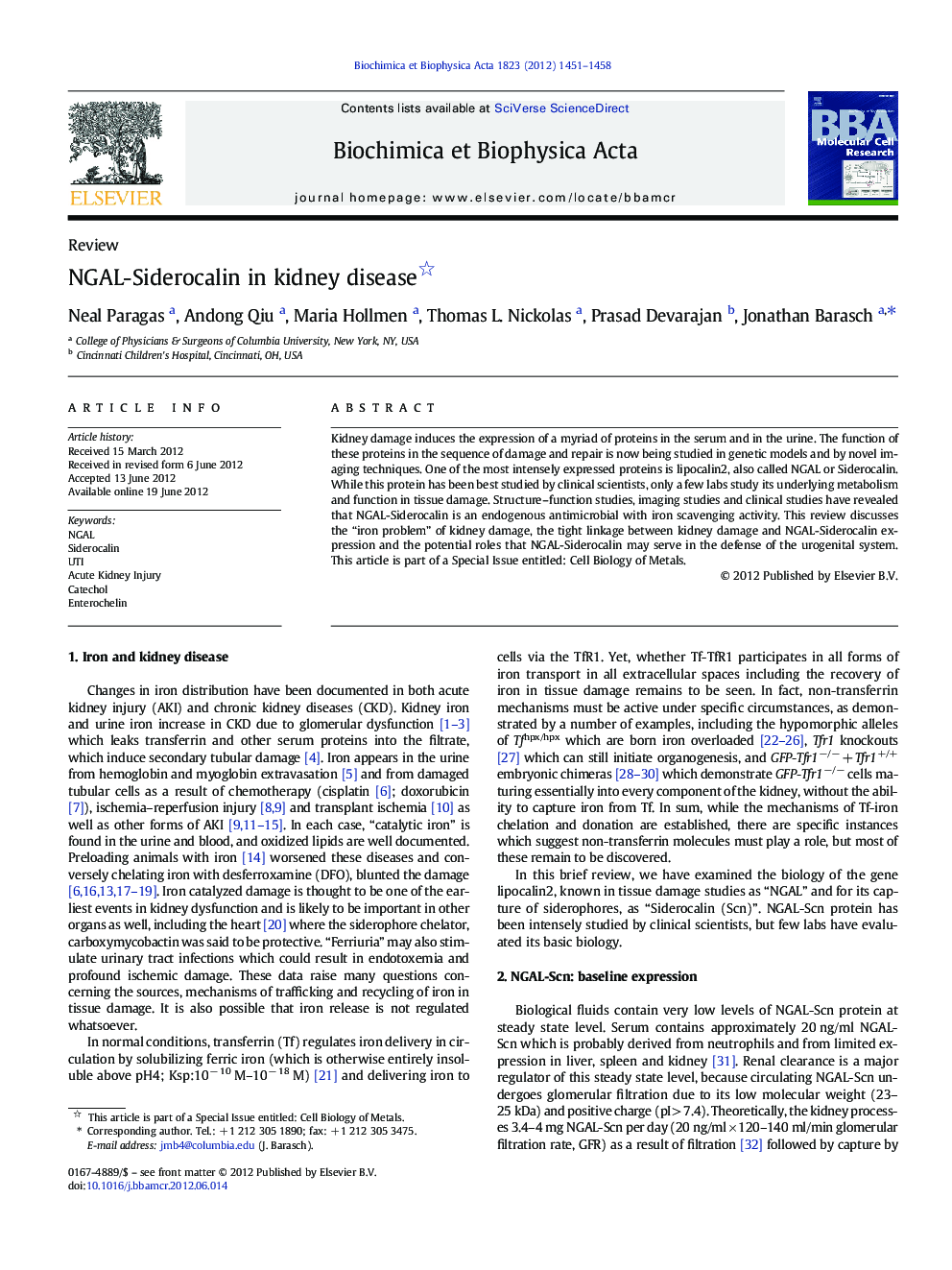| Article ID | Journal | Published Year | Pages | File Type |
|---|---|---|---|---|
| 1950705 | Biochimica et Biophysica Acta (BBA) - Molecular Cell Research | 2012 | 8 Pages |
Kidney damage induces the expression of a myriad of proteins in the serum and in the urine. The function of these proteins in the sequence of damage and repair is now being studied in genetic models and by novel imaging techniques. One of the most intensely expressed proteins is lipocalin2, also called NGAL or Siderocalin. While this protein has been best studied by clinical scientists, only a few labs study its underlying metabolism and function in tissue damage. Structure–function studies, imaging studies and clinical studies have revealed that NGAL-Siderocalin is an endogenous antimicrobial with iron scavenging activity. This review discusses the “iron problem” of kidney damage, the tight linkage between kidney damage and NGAL-Siderocalin expression and the potential roles that NGAL-Siderocalin may serve in the defense of the urogenital system. This article is part of a Special Issue entitled: Cell Biology of Metals.
► NGAL is expressed by the kidney during acute kidney injury. ► Urinary NGAL correlates with the severity of acute kidney injury. ► NGAL binds iron with a bacterial siderophore, enterochelin, with an extremely high affinity. ► NGAL binds iron with an endogenous metabolite, catechol, with high affinity.
